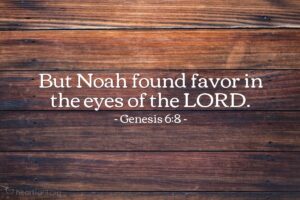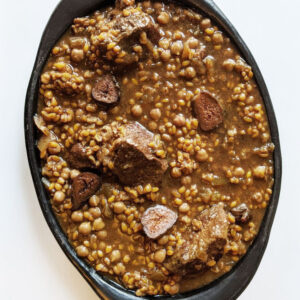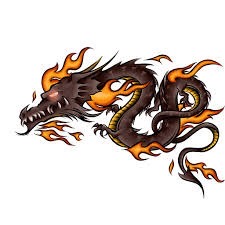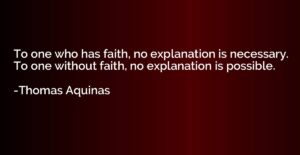Bolok 2025: Set Up to Fail
by devadmin | July 10, 2025 6:09 pm
Raboyseyee and Ladies,
A big mazel tov to our friends Carine and Bruce Schneider upon the bris of their latest grandson – Yehuda Aryeh (Leo Emmanuel) Solomon- born to their children Nicole and David Solomon. Mazel tov to grandparents Shevy and Eddie Solomon and to both extended families. May Leo Emmanuel, named for Carine’s father, OBM bring his parents, grandparents, great grandparents and the entire family much joy and nachas, always.
Set Up to Fail:
“Set up to fail” describes a situation, where someone -or many- is/are intentionally or unintentionally placed in a position where success is highly unlikely due unrealistic expectations, or other sabotaging factors. Later will read how 24,000 Yiddin were placed in a situation with an equal or greater number of hookers; you know the rest of the story. More on them later.
Welcome to Parshas Bolok which features not one, but two goyim as the lead characters. One, Bolok, gets a parsha named for himself and the other, Bilam – never been heard from before- appears out of nowhere and takes center stage. He will get a bunch of shoutouts in our parsha, again next week in Parshas Pinchas, and will of course be mentioned in Sefer Devorim when Moishe recounts the years in the midbar. Why the heylige Toirah has parshas named for goyim, ver veyst?
I was just throwing this factoid out because it’s been mentioned in the past, but once we are on the topic, let’s go a bit deeper. As you all know there are several parshas in the heylige Toirah named after non-Jews. Of those, one was a bad actor, a rosho mamish, one of the early antisemites. That would be Bolok, chief protagonist of this week’s parsha. Ober, let us first shout out Noiach the first non-jew to get a parsha name. He was seemingly a righteous non-Jew. Then again, nobody was Jewish in his days. Why did he get a parsha? Let us not forget the last few words in Parshas Bereishis (6:8): “וְנֹחַ מָצָא חֵן בְּעֵינֵי יְהוָ.” “But Noiach found favor in the eyes of Hashem.” Says the medrish (Bereishis Rabbah) that the word “חֵן” (favor) implies that Noiach had an inner grace, a natural goodness, not just merit through deeds. Some exegetes (like the Sforno) say this means that even before his righteousness was proven, the RBSO already saw in him the potential to be the father of a new world. Some say that Noiach got a parsha name to show that righteousness is recognized regardless of origin. Noiach was called “ish tzaddik” even though he was not a Jew. The bottom-line according to this pshat: The heylige Toirah doesn’t play favorites — righteousness is righteousness and Noiach found favor in the eyes of the RBSO. And the final bottom line on Noiach? Being liked by the RBSO comes with many perks; getting a parsha named after yourself is only one example. As an aside, having charm opens many doors in life. Gishmak.

As to Yisroy, Moishe’s shver (Jethro) father-in-law, he was a Midianite priest who seemingly converted. Why he got a parsha, ver veyst, but when your son-in-law is in charge, all bets are off. Some say that Yisroy deserved and got a parsha named because he gave Moishe the idea of a judicial system (Shmois 18). The heylige Toirah immortalized his name for his contribution. Says the medrish that Yisroy’ s parsha which includes Revelation – the Ten Commandments mamish, is a big deal showing how a non-Jew’s advice prepared the world for receiving heylige Toirah.
Finally, this week’s parsha of Bolok is named after king Bolok, the Moabite who hated the Jews and resorted to hiring Bilam to curse them. If parshas were to be named in our times based on these criteria alone, we’d have a long list to pick from. Why Bolok got a parsha, ver veyst? On the other hand, we can kler that none of the other candidates wanted their names attached to the parsha which featured idolatry combined with a mass orgy with Moabite shiksa whores which led to 24,000 deaths among the Yiddin. That combination, as we have stated in past years, is always deadly. It’s best not to combine the two. More on just who the 24,000 dead people were, a bit later.
Ober, why taka are parshas named after goyim no matter the circumstances? Some say it’s to teach that truth is where it’s found -even among the other nations. And to quote the source, let’s check out Eichah Rabbah 2:13 which say this: “Chochmah bagoyim — ta’amin” “Wisdom among the nations? Believe it.” There’s more? Says Rav SR Hirsch (on Yisroy), azoy: “The heylige Toirah does not look at race, but at deeds. If a Midianite priest rises to moral clarity and acknowledges the RBSO, his name can crown a portion of heylige Toirah.” Veyter.

What’s on the Ois’s mind this week besides some rabbi over in Israel who was seemingly bored and decided to ban the eating on cholent during the week (the Ois is working on a special edition on this topic) and why has it been bothering me for several weeks now? Let’s talk about it: Over the many years in yeshiva, we were taught that all the Yiddin condemned to death -those above the age of 20 at the time of the miraglim incident who were not granted visas into the promised land- died over the 38 year period during which the Yiddin moved about -mostly aimlessly- from place to place in the midbar as if lost and stuck on Gilligan’s Island. Ober, we also know this: In last week’s parsha of Chukas, the RBSO -in response to the Yiddin’s new frivolous complaints- sent fiery snakes and many died. That’s exactly what the heylige Toirah tells us though it does not specify a number. Let’s check out the posik from (Bamidbar 21:6) “וַיְשַׁלַּח יְהוָה בָּעָם אֵת הַנְּחָשִׁים הַשְּׂרָפִים, וַיְנַשְּׁכוּ אֶת הָעָם; וַיָּמָת עָם רָב מִיִּשְׂרָאֵל.”
“Hashem sent the venomous snakes among the people. They bit the people, and many people of Israel died.”

Humm…. “וַיָּמָת עָם רָב מִיִּשְׂרָאֵל” – “a great number of people died” but no specific count is recorded in the heylige Toirah? Avada this would be the perfect opportunity for the medrish to come up with some number and rationale, but it does not. In fact, no authoritative medrish or Gemora gives a specific number of deaths from the snakes. Instead, the focus of the episode is not on the body count but on the sin (complaining about the manna), the punishment (serpents), and the miraculous healing via the Nechash Nechoishes (bronze /copper serpent). Ober, did the copper snake mamish heal the people? Did people die, or were they cured when looking at the copper snake? Did the same people who died, come back to life? Or, did some, or many die mamish, while other people got bitten but then cured by the magic copper snake? And did the copper snake mamish heal people? Or, was it only symbolic? And what happened to those who looked at it? Is this confusion the reason the medrish does not provide a number to the dead?
Let us review the story: The heylige Toirah tell us that “Hashem sent the fiery serpents… and many Israelites died.” Next: “The people came to Moishe and said: We have sinned…” Hearing that the people had instant regret, the RBSO said to Moishe: Make a fiery serpent and set it on a pole… “And whenever someone was bitten, and he looked at the copper snake, he lived.”
And the question is repeated: Did the copper snake heal them? Did the dead come back to life? Did they even die? Mamish great questions and taka, the heylige Mishneh (Rosh Hashanah 3:8) asks azoy: “וכי נחש ממית או נחש מחיה?” “Did the copper serpent kill or give life?” And the answer?
“Rather — when the Israelites looked upward and subjugated their hearts to their Father in Heaven, they were healed. If not, they perished.”
In the end, it appears that the copper snake was a but a spiritual tool and not a medical device. Looking at it was not magic; instead, it was a trigger for emunah, teshuvah, and prayer. Says the Ramban azoy: The punishment of the fiery snakes was mida-k’neged-mida (measure for measure). The people spoke loshon horo and ingratitude — so they were punished by the serpent, the symbol of the first sin of speech (in Gan Eden). Remember the trouble that slithering mischievous snake caused? According to at least one medrish, that snake did more than talking with Chava. The healing came not from the copper image itself, but because of it. The Yiddin were instructed to gaze upward to the RBSO… and not rely on natural remedies. The bottom line: Those who believed and looked up were healed. Those who refused or had no faith died, even if they looked at the snake itself. Another more serious bottom line: When asking for the RBSO’s help, one must do whatever it takes, but also have faith!

Ober did people die, or were they saved by the copper snake? Let’s clarify. The bottom line seems to be azoy: Both are emes: Seemingly, many people actually died from the fiery serpents but those died before the copper snake was made. These people were dead, mamish. Ober, after that, after the snake was fashioned, those who looked at the copper snake with faith were healed. Those who didn’t, died. And says Rashi: “Many died — before Moishe prayed and made the snake.” There was real loss of life. The copper snake was a spiritual intervention to stop the deaths from continuing. Ober, why doesn’t the heylige Toirah give a number of dead? A few exegetes suggest that when the moral of the story is spiritual — not political or military — the heylige Toirah avoids statistics. The goal here was teshuvah, not historical record-keeping. Gishmak.
Shoin, whatever the number of dead, the bottom line is that we don’t know it. What else don’t we know? We don’t know if those who died from snakebites were from the people previously condemned to death -back in Parshas Shelach- or, from those who were under 20 at the time of the decree. In other words, new people were dead even late in year 40. And before we get to that discussion, efsher you’re wondering what happened to this magical copper snake? Did it travel with the Yiddin as they crossed the Jordan into Israel? Was it in use? How long? Or, was it a one hit wonder?
Nu, believe it or not, sometime later, the Yiddin found a way to abuse the snake; nothing new here. Kimat all -no matter their religion- abuse their snake from time to time, if you chap. Let’s read that story too:
In one of the most fascinating “epilogues” in Tanach (Melachim II 18:4), we read this: “He [Chizkiyahu] removed the high places, broke the pillars, cut down the Asherah, and smashed the copper serpent that Moishe had made — because until those days, the Children of Israel had been burning incense to it; and he called it ‘Nehushtan.'”
In the times of King Chizkiyahu? The copper serpent that Moishe made in the midbar was later destroyed by none other than King Chizkiyahu (Hezekiah)? Well blow me down. How many years later was that? Let’s do some math.
King Chizkiyahu (Hezekiah) ruled the Kingdom of Judah around 700 BCE. Specifically, his reign is generally dated to circa 729–686 BCE, with co-regency possibly beginning earlier. Let’s now calculate how many years after. The traditional Jewish date for Matan Toirah is the year 2448 which corresponds to circa 1312 BCE. In plain English, from Matan Toirah (1312 BCE) to Chizkiyahu (around 700 BCE) is approximately: ~612 years. Wow! That snake had one long run; seemingly, things fashioned out of copper or bronze have a long shelf life. Most other snakes begin breaking down after 50-60 years, if you chap. Shoin.
Let’s walk through what happened and why. The original copper serpent Moishe fashioned, a sacred object used once to inspire faith, was kept by the people for hundreds of years but eventually became a misused religious symbol. The Yiddin began to burn incense to it — treating it almost like a deity or magical relic. It morphed into idolatry, the very sin it was originally meant to prevent! What to do? King Chizkiyahu, one of the most righteous kings in history, crushed it. The bottom lines: Even holy objects can become dangerous when misused. Even something made by Moishe under the RBSO’s direct command, has no intrinsic holiness — unless used properly. Says the Rambam (Hilchos Avoidah Zarah 1:3): “This was one of the earliest examples of how idolatry can begin: People see an object associated with holiness and begin to worship it itself.” What triggered it? What was the final straw? Says the medrish (Tanchuma Chukas 19), azoy:
“ישראל נעשו טפשים והיו טועים אחריו, והיו מקטרים לו…”
“The Israelites acted foolishly and went astray after it, burning incense to it…”
Instead of remembering that it was a tool to inspire emunah, they treated it as a healing idol. The people began to attribute power to the object itself, not to the RBSO. The bottom line: The medrish praises Chizkiyahu for spiritual courage: He didn’t care about nostalgia, tradition, or public outrage. He saw people idolizing the form and forgetting the RBSO behind it. So he smashed it.
Hod did the people react? Our sages teach us that some people saw it as heretical to destroy “Moishe’s snake,” but Chizkiyahu understood that the spiritual health of the people mattered more than nostalgia. The heylige Gemora (Pesochim 56a) lists this as one of Chizkiyahu’s greatest acts. Veyter.
As mentioned above, as our parsha comes to a close, the heylige Toirah recounts a staggering national tragedy: The death of 24,000 Yiddin in a plague following the sin with the Moabite women and the worship of Baal Peor. And the question is this: If the generation condemned to die in the midbar had already perished over the 38 years of wandering, who were these 24,000? And why such severe punishment at the very edge of redemption?
Shoin, let us chazir the events. Back in Shelach, following the sin of the Meraglim, the RBSO decreed that all men over age 20 would die in the wilderness. By the time we reach our parsha, it’s year 40 and the Yiddin are mamish just outside of the promised land. Most of the condemned generation has already died. Those alive are getting ready to cross the Jordan and enter the land. Next: let us read the pisukim.
בַּמִּדְבָּר כ”ה:א–ב
וַיֵּשֶׁב יִשְׂרָאֵל בַּשִּׁטִּים, וַיָּחֶל הָעָם לִזְנוֹת אֶל בְּנוֹת מוֹאָב.
וַתִּקְרֶאןָ לָעָם, לְזִבְחֵי אֱלֹהֵיהֶן; וַיֹּאכַל הָעָם, וַיִּשְׁתַּחֲווּ לֵאלֹהֵיהֶן
Translation: 25:1 And Israel settled in Shittim, and the people began to commit harlotry with the daughters of Moav. 25:2 And they (the Moabite women) invited the people to the sacrifices of their gods; the people ate and bowed down to their gods.
The people begin to commit harlotry with Moabite women. How? The medrish (Midrash Rabbah, Bamidbar 20:23 and 21:1 provides color. The women lured the men into worshipping Baal Peor while also engaging in sexual activity. We have previously discussed the details as provided to us in the medrish which laid it all out, if you chap. The RBSO’s anger flared, and a plague began. Pinchas stopped the plague by killing Zimri and Kozbi. Total deaths: 24,000.
Who were the 24,000? Most commentators (Rashi, Ramban) say the 24,000 were from the next generation — those who had been under 20 at the time of the Meraglim. They were not punished for the previous sin, but for their own choices: immorality and idolatry. In other words, even as the Yiddin were on the precipice mamish, about to cross the Jordan, the RBSO was till thinning out the population and what we were taught back in yeshiva that all who had to die because of the miraglim were already dead and buried, is not emes. Ober, as we know quite well, most is not all, and the Abarbanel and others allow that a few elders might have remained and were included in the punishment. In other words, the 24,000 had previously been condemned to death, but somehow were still around and available for the party with Moabite shiksas. The plague seemingly served as the final purging of any stragglers. The good news for them? Though elderly, they were still able to perform with the shiksas, albeit it was their last performance.

We close with this: Of course, the 24,000 Yiddin succumbed to the Moabite shiksas; very few could withstand such temptations. Bilam knew this as does every male. The cunning shiksas were like a smorgasbord: no man has ever won the battle of the shmorg. Were they given a test they could not pass? Were they set up to fail?
A gittin Shabbis!
The Heylige Oisvorfer Ruv
Yitz Grossman
Source URL: https://oisvorfer.com/bolok-2025-set-up-to-fail/